|
H u r g h a d a - L u x o r -
guided
day trip
|
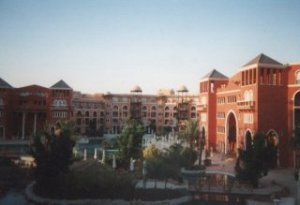 |
Hurghada
is a tourist city. In fact, all along that part of the
Red Sea, real estate is reserved for gigantic hotel
complexes and fun parks. A great place for luxury loving
tourists, who aim to do nothing but lying around in the
sun, on pebble beaches, which have been created
artificially (with dynamite blastings). An army of
service staff will cater to your every need, at
reasonable prices.
|
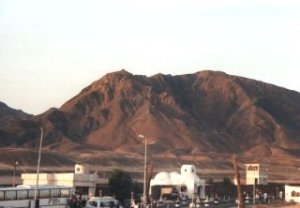 |
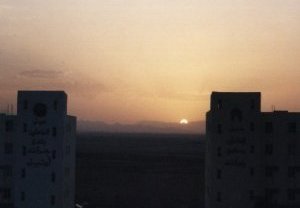 |
|
This
applies to the beach and hotel facilities. We stayed at
a 4 ½ star hotel, which was recommended to us by a
German travel agency. According to their information,
the hotels with 3 stars and less are too compromising,
when it comes to general hygiene standards. |
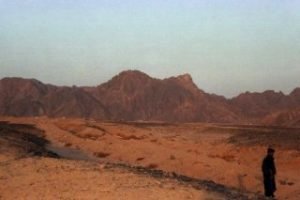 |
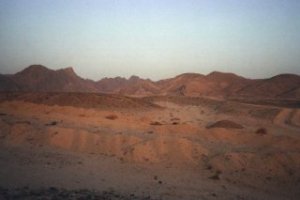 |
However,
if you are keen on a hyper service system (no offence
against the staff, they were great) and luxurious hotels
with pools and meter long breakfast and dinner buffets,
you will love this place. You may guess that I prefer
simple accommodation instead. For all who do too: there
was a Youth Hostel just outside of the super-hotel area
(500m down the road), which also had an internet café
right in front of it and a little supermarket next to
it. This place looked simple and comfortable to me. |
|
Hurghada
used to be a fisher village with a population of 400.
Now it is a hotel-tourist farm and employs people from
all over the country. Persons from Cairo and Luxor find
work in the numerous shops, restaurants or hotels.
Although the Egyptians in Hurghada are used to the
Europeans and their "ways", it is sensible to
be appropriately dressed while moving outside of the
hotel complex, out of respect for the local culture.
Exposing excessive amounts of skin or signs of affection
in public are generally not acceptable in Islamic
culture. |
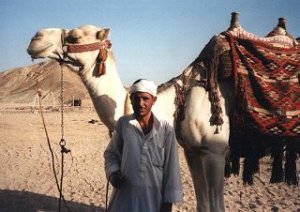 |
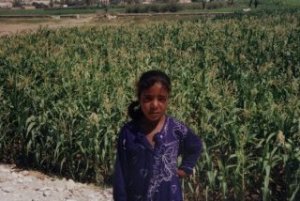 |
During
our visit in September 2000 (low season) the
temperatures reached 38 degrees Celsius in Hurghada and
about 42 degrees Celsius in the Valley of the Kings. It
is therefore advisable to bring light clothing, in the
way of cotton shirts (also long-sleeved) and knee length
shorts. The most suitable ones are those Indian type
shirts, which are quite airy. They act as your private
air conditioner. Also include sunglasses and a hat or
cloth to cover your head with. |
|
Try
not to wear body tight shirts or pants, they may look
attractive, but will make you suffer. Our trip to Luxor
from Hurghada took about 6 hours by bus. We got up at
5am and our bus convoy got to Luxor around noon. We
chose the guided bus tour because of security reasons.
It is not recommended to travel by yourself as a visitor
in Egypt (which is a pity). The trip was quite
comfortable. Interesting stories and anecdotes about
Egypt made time pass quickly. The German speaking, FTI
(Travel Company) Tour guide Mohammed Ezzh (or Ezz) from
Cairo entertained us quite well. In fact, if you ever
get onto a FTI day trip to Luxor, ask if he’s on it.
|
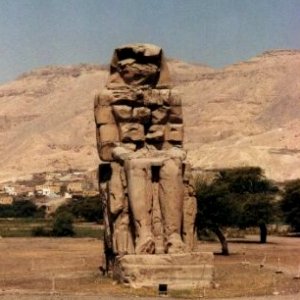 |
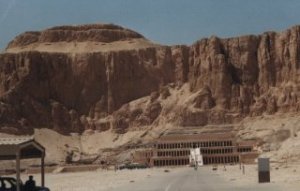 |
He’s
a very enthusiastic and knowledgeable person and seems
to have found HIS vocation. Before we had lunch at a
collaborating hotel, we visited the western part of
Luxor, where the tomb of queen Hatschepsut, and, amongst
others, the rulers Ramses III, Sethos I, AmenophisII and
Tut-anch-Amun lay in the Valley of the Kings.
|
|
When
we visited the tombs, we noticed that there were tiny
desert flies. That’s normal - but these also stung and
got me very irritated. It is advisable to put some
insect/mosquito deterrent onto the skin before entering
that area. The tombs were quite fascinating and through
our tour guide we managed to grasp the meanings of some
of the wall paintings.
|
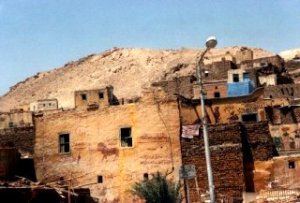 |
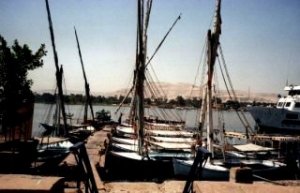 |
These
paintings are 3550 years old and still convey the wealth
of its time. Due to the dry climate the colours that
still shine. The artists executed a standard theme,
which described the different stages of the pharo’s
entering into the afterlife (for more click here). |
|
After
viewing the tombs and soaking in some history, we made
our way to the Nile to catch a boat over to the east to
have lunch and continue with the temple viewing. During
that day, it was important to drink a lot of water and
to keep your head covered. The sun was very strong and
the temperatures were higher than in Hurghada. |
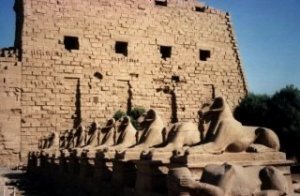 |
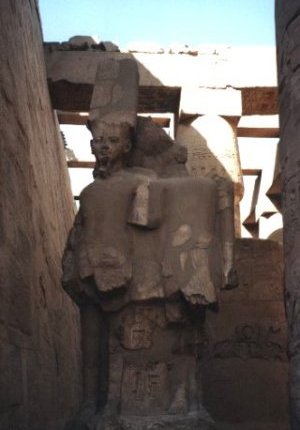 |
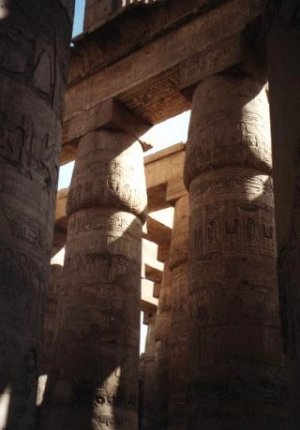 |
|
Our
next station was the temple of Karnak. This used to be
the main place of amun worship and was closed to the
public. Nearly every king added a piece to the temple
complex and during antiquity the great pillar hall was
one of the seven world wonders. The pillars used to
carry a stone plate as the ceiling. Light would shine
through specially constructed grills.
|
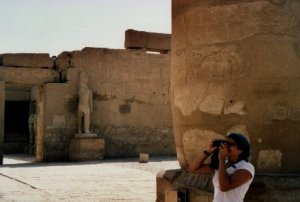 |
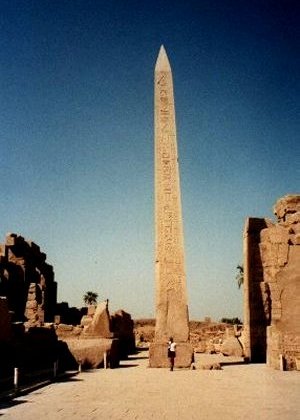 |
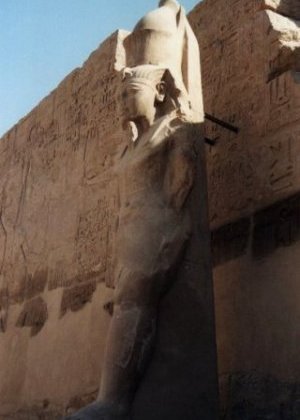 |
|
From
the Karnak temple we went on to the Luxor temple, build
for the god amun by Amenophis III. The Karnak and Luxor
temple used to be connected by a 3km long sphinx-avenue.
This building used to have two obelisks at its entrance.
One of these was gifted to
France by a sheik and now decorates the Place de la
Concorde.
|
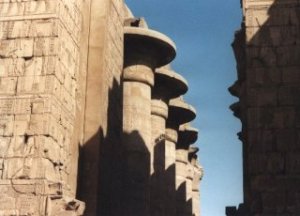 |
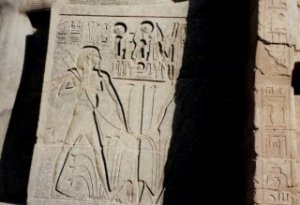 |
At
the far back of the temple, a room was transformed into
a chapel by Alexander the Great according to the travel
guide. The trip came to an end and before we started the
bus journey back to Hurghada at about 6pm, we were taken
to a papyrus shop.
|
|
The
art of papermaking was explained to us and we could
acquire hand painted papyrus with traditional and modern
motives. Afterwards we got back on the bus and while the
sun set, we were on our way back. Got there at about
midnight and had dinner at the opposite hotel. They were
prepared for the extra shift.
|
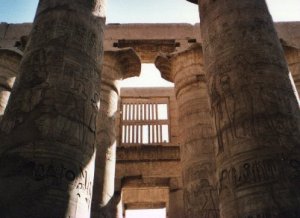 |
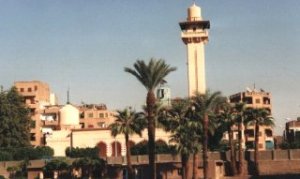 |
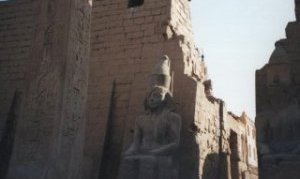 |
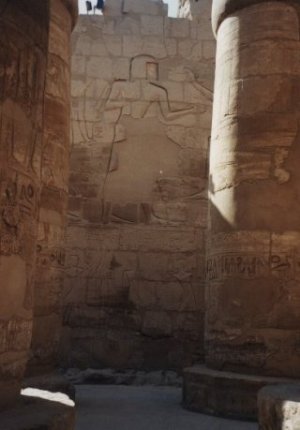 |
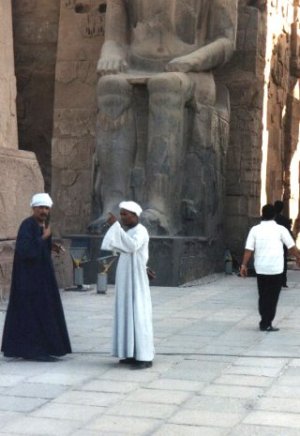 |
|
Only
afterwards one realises the significance and scales of
the sights seen. |
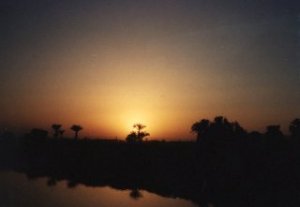
|
|
R e d S e a -
Abu
Ramada Sth, Elaruk Diving
& Sharm el Naga Snorkeling |
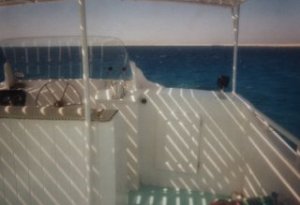 |
This
is why we chose to go to the Red Sea: to experience the
underwater world. It is said that the Red Sea offers the
worlds best diving right after the Great Barrier Reef.
Although I was quite amazed about the colorful fish I
have also heard about the deterioration of the coral
reefs. Apart from the slow increase in water temperature
in those two great diving areas, there’s also been
increased water tourism at these sites, which could also
have contributed to the rather strained look of the
reefs.
|
|
Anyway
we went to see Elaruk and Abu Ramada south with
Eurodivers. This company is quite expensive, but as
first time Red Sea visitors we wanted to go the sure
way. The gear was rented for the dives so that increased
the price. The trip included two dives and lunch. The
first site was Abu Ramada south. Our maximum diving
depth was 20m and we had good visibility.
|
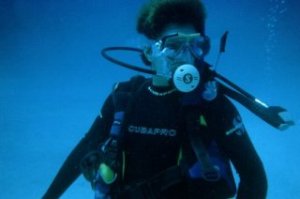 |
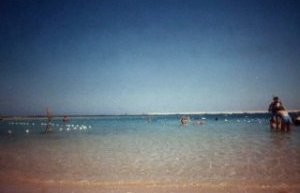 |
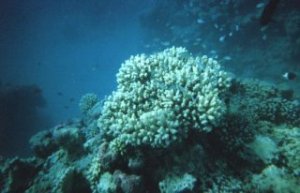 |
|
We
did a guided round along the coral and sponge covered
reef wall and saw some wonderful pipefish, one lionfish,
a blue spotted stingray and parrotfish (which seem to be
abundant in the Red Sea). At 3m there was a little boat
wreck or mostly the iron frame of it. Interesting dive
in a different sort of environment. After Egyptian rice,
bean and fish lunch and an hour’s rest the boat
anchored at Elaruk. The underwater arrangement consisted
of a half circle formation of five round reef rocks. |
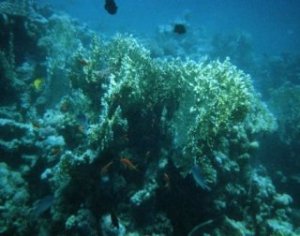 |
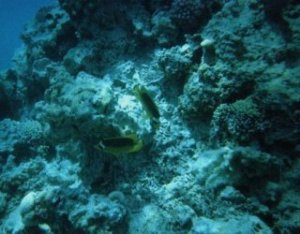 |
Here
there was more colourful coral present. We got to see
some scalefin anthias, different sorts of wrasses,
Anemonefish, common lizardfish, and groups of blotcheye
soldierfish (my favourite). Our visibility was good
(10m). To me this was the better dive out of the two,
because of the colours. On the next day we got onto a
bus at 9 am which took us to Sharm el Naga. A naturally
sandy beach with a wonderful reef plate system which
habours a great variety of fish, corals (very little
sponges though), see urchins and plastic bags. |
|
Somehow,
there seems to be a garbage disposal problem in that
region. It seems that the collections from building
sites and hotels end up in shallow sandy pits in the
desert outside of the Hotel farms, who are owned by
German and other "western" Businesses. The
wind must blow the refuse all over the area including
the beach and from the beach into the water. Anyway most
of the water tourists did not mind the new species and
may even have mistaken them for a new evolutionary
species of jellyfish.
|
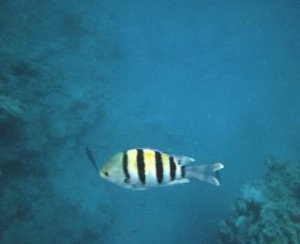 |
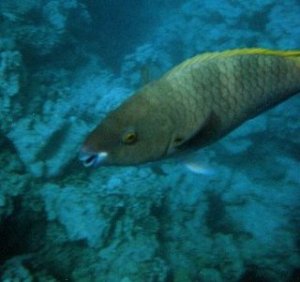 |
Nevertheless,
the underwater world was quite astounding. The depth
ranged from about 0.5m to about 7m where there was reef
still visible and reachable via a snorkel dive. We
experienced the typical twobar anemonefish scene. The
pair of fish, who live within the anemone and are immune
to its poison, were attacking us for coming to close to
their home. We used to see this in nature documentaries
but to experience it in real life is wonderful. Toward
the end of the day at about 3pm we saw a single
barracuda in the shallow part of the pool.
|
|
We
stared at it for about 10 minutes before we left the
water. It was still with glassy eyes and a half-opened
mouth. The teeth looked sharp and long. In between the
teeth there was a cleaning company of small fish who the
barracuda seemed to tolerate patiently, knowing the
value of their service. And if you managed to get close
enough to the reef you could see baby clams with their
frilly neon turquoise dress on the outside of the shell
opening.
|
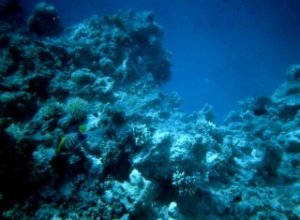 |
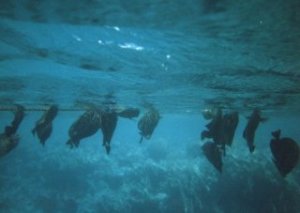 |
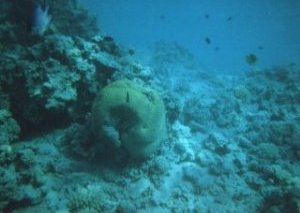 |
| Last
edited 19-06-01
All
photos by A. Goss & S. Goss
©
A.Goss, April 2001 |